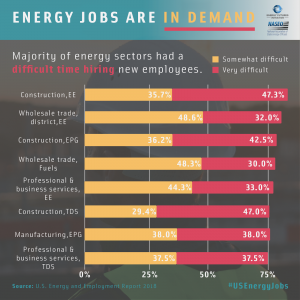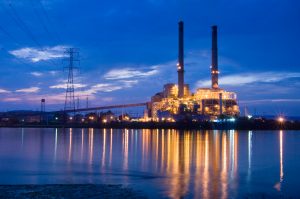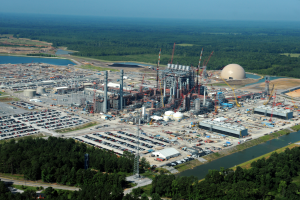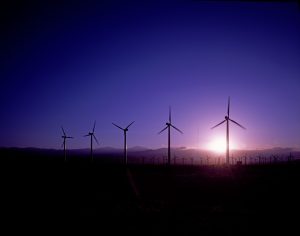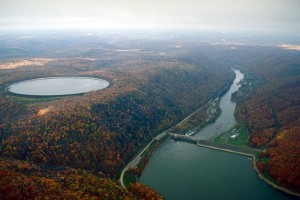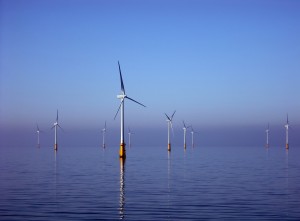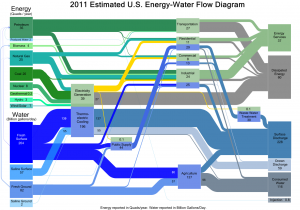13 item(s) were returned.
Environmental Permitting Specialist
Texas Commission on Environmental Quality; formerly Policy Analyst at ClearPath
Note: At the time of this discussion, Faith Martinez Smith was a Policy Analyst at ClearPath, managing the organization’s energy storage, geothermal, and hydropower portfolios. Grid-scale energy storage is critical for decarbonizing our economy and merits high-profile attention from our policymakers. Storage is technology agnostic—it can be used with any generation technology, provides ancillary services, and can reduce demand charges. As climate change policy continues to take center stage, the commercialization of U.S. energy storage technologies can play a pivotal role in enabling higher integration of variable renewable resources (wind and solar power) and addressing grid reliability. Thus far,… [more]
View InsightDistinguished Associate
Energy Futures Initiative
On May 16th, The Energy Futures Initiative (EFI) and the National Association of State Energy Officials (NASEO) released the 2018 U.S. Energy and Employment Report (USEER). The USEER offers data on employment trends in four key energy sectors – Electric Power Generation and Fuels; Transmission, Distribution and Storage; Energy Efficiency and; Motor Vehicles. This is the third installment of the energy jobs survey established by the U.S. Department of Energy in 2016. Overall, firms covered by the survey anticipate roughly 6.2 percent employment growth for 2018. Energy Efficiency employers project the highest growth rate over 2018 (9 percent), followed by… [more]
View InsightPresident & CEO
The Electricity Consumers Resource Council
On January 8, the Federal Energy Regulatory Commission (FERC) voted unanimously to reject the Department of Energy’s (DOE) proposed rulemaking on grid reliability and resilience pricing. The rule would have provided cost recovery to power plants holding 90 days of on-site fuel supply. Only nuclear and select coal facilities would have qualified. Rather than create a new power market product or refine the pricing rules of existing products, the proposal departed from principles of electricity market design by subsidizing power plants with a specific characteristic. FERC’s ruling confirmed that both the goal – promoting 90 days of on-site fuel –… [more]
View InsightResearch Analyst
Fuel Freedom Foundation
In the wake of Hurricane Harvey, the average price of a gallon of gasoline nationwide spiked by 25 cents, with some states seeing an increase of as much as 42 cents per gallon. This is the largest increase in a single week since the 49-cent jump following Hurricane Katrina in 2005. The fact that the entire nation’s fuel infrastructure can be disrupted by a localized single event is deeply concerning. In fact, our economy is disproportionately reliant on oil —10 of the previous 11 U.S recessions were preceded by a spike in oil prices (and subsequently gasoline). Indeed, as Michael… [more]
View InsightProposed in 2006, Southern Company’s (“Southern”) Kemper County Power Generation Facility (“Kemper”) was initially viewed as a flagship demonstration project for “clean coal” technologies like carbon capture and sequestration (“CCS”). Eleven years on, Southern has announced it is “immediately suspending start-up and operations activities” on the gasifier units and the facility “will continue to operate using natural gas pending the Mississippi Public Service Commission’s decision on future operations.” The 582 MW plant was designed to convert lignite coal into a synthetic gas with a CCS system capturing more than half of the emissions. Since 2012 however, Kemper has faced years… [more]
View InsightPresident & CEO
The Electricity Consumers Resource Council
The Federal government supports energy investment and production through the tax code and spending programs administered by the Department of Energy (DOE). In 2016, energy-related tax preferences cost an estimated $18.4 billion, while relevant DOE spending programs cost $5.9 billion. DOE programs advance knowledge benefits, which the private sector underproduces because companies cannot capture all the benefits for themselves. Early-stage research and development (R&D) has the largest “knowledge spillovers,” yet DOE direct investments in applied (late-stage) energy research is more than double those in basic (early stage) research. Tax preferences may encourage knowledge benefits for nascent technologies but deter investment… [more]
View InsightPresident
Clean Energy Development, LLC
Pumped storage hydro (PSH) has provided the U.S. with greater capacity for energy storage and grid reliability since the 1920s, although not to its full potential. The capabilities of PSH could be realized as a result of freshly passed energy legislation in the Senate. If S.2012 is signed into law, it would direct the Federal Energy Regulatory Commission to “identify and determine the market, procurement, and cost recovery mechanisms that would encourage development of PSH; and properly compensate those assets for the full range of services provided to the power grid.” The Department of Energy (DOE) agrees, and recently recognized… [more]
View InsightNASA has used thermoelectric energy, or the conversion of waste heat to electricity, for decades to power spacecraft and the Mars Science Laboratory Rover. However, thermoelectric energy has attracted minimal attention in the alternative-energy world due to its limited commercial viability, until recently. Last year, Michigan State University (MSU) with the support of the Lawrence Berkley National Lab developed a new class of thermoelectrics using a compound called tetrahedrite that is believed to be more cost-effective and has the potential for everyday use. One start-up finding success building on the findings from MSU is Alphabet Energy. They have developed a stand-alone… [more]
View InsightAccording to The Department of Energy (DOE), the United States has 4,000 GW of offshore wind energy potential, with the strongest winds located off the North Eastern Atlantic Outer Continental Shelf (OCS). There are currently no operational offshore wind farms in the country, but the Bureau of Ocean Energy Management (BOEM) has identified 18 states which are involved in early stage offshore wind projects. High profile offshore projects like Cape Wind have faced stiff opposition over the last decade and the first project to begin construction, Block Island, has only recently done so. Utilities and regulators have raised concerns about… [more]
View InsightDirector of Energy Systems Analysis and Integration
Department of Energy
This prompt is the second in a series of discussions led by invited speakers at the upcoming 15th National Conference and Global Forum on Science, Policy and the Environment: Energy and Climate Change to be held January 27-29, 2015 in Washington, DC. Energy and water systems have historically been designed and managed independently. However, the systems are, in fact, interdependent. In its simplest form, the energy-water nexus can be broken into two parts: “energy for water” —the energy required to treat, transport, or heat water—and “water for energy” —the water required for cooling thermoelectric power plants, oil and gas production,… [more]
View Insight
